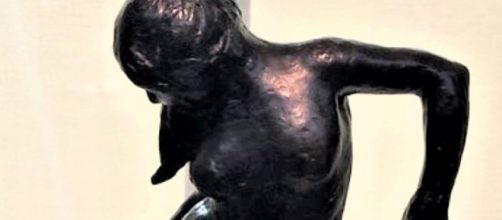With the torrent of Van Gogh shows that pour into exhibit halls throughout the world year after year, the claim from London’s The Courtauld Gallery about a first-ever showing of his work opening next month seems delusional.
The claim: “This will be the first time that the full span of Van Gogh’s self-portraiture has been explored in an exhibition.” Is that possible? More importantly, does it matter? Don’t all his selfies usually look pretty much alike?
It’s not like this museum has little else to exhibit. As its website points out, “The Courtauld cares for one of the greatest art collections.” The holding ranges from medieval to modern times.
What took so long?
Here’s another question. Since The Courtauld Gallery has been around since 1932, and since it specializes in Post-Impressionist painters like Van Gogh, why did it take 90 years to mount this show?
But wait. Maybe there’s even a better question: why hasn’t The Courtauld Gallery done a Degas show? After all, it owns two of his works that go begging for discussion in this #MeToo era: a painting “After the Bath – Woman Drying Herself,” and a sculpture “Dancer Looking at the Sole of Her Right Foot.”
Both of these works diminish women, which was the Degas way. By his own words, he was a misogynist. “I have perhaps too often considered woman as an animal,” he told the painter Pierre Georges Jeanniot.
Art historians routinely say that Degas sought to capture the female body in motion. But there’s more going on than that. He caught women in elegant, graceless moments that tend to diminish them.
The painting owned by The Courtauld Gallery makes the case. “After the Bath – Woman Drying Herself” is a voyeur view of a naked woman after coming out of a tub. Women in their bath was a favorite subject for Degas. Always faceless and stripped of personality, each woman is Bathsheba devoid of a story.
Robert L. Herbert writing in the New York Review in 1996 quoted Degas talking about his art in a most telling way: "One does not marry it…one rapes it."
And when it comes to his images of dancers, the models were invariably scrawny impoverished girls that he called "the petit rats'' and "little monkey girls."
Hollywood hokum
Yet, in the 1999 HBO movie “Degas and the Dancer,” Alison Pill who plays his model, Marie, had a Hollywood-ized relationship with him as his muse – as if a clumsy teeny-bopper and a pompous chauvinist inspire each other to greatness.
An improbable scene tells the story. When Degas’ model says of one of his pastels, "I think it's pretty, like air,'' he answers, "Good words.'' This is supposedly from the man quoted in historian Phoebe Pool’s 1967 book “Impressionism” saying in women there is an "absence of all feeling in the presence of art.''
No wonder Mary Cassatt, whose work he disparaged, wouldn't talk to him for years. By all historical accounts, Degas was a male supremacist.
It's notable that he painted women at work – barmaids, dancers – entertaining/waiting on men while his fellow Impressionism pictured women at their leisure, enjoying themselves. Degas once did a whole series just of women ironing.
The Courtauld Gallery should have mounted a show of the Degas sculpture and painting it owns making plain how he viewed young ballerinas as “little rats” and women as mindless “an animal.”


